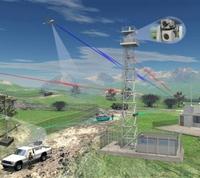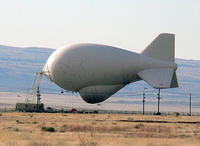-
CBP awards $145 million border towers contract to Elbit
DHS’s Customs and Border Protection(CBP) has awarded Elbit Systems of America, a subsidiary of Israeli based Elbit Systems, a $145 million contract for the Integrated Fixed Tower (IFT) project along the Mexico-Arizona border. The first phase of the project includes a number of observation towers along the Nogales, Arizona border with Mexico. Additional options could include towers at over five other border sections in Arizona.
-
-
Two politicians insisting on more congressional oversight of DHS
The lawmakers who support the proposed DHS Acquisition Accountability and Efficiency Act, authored by Representative Jeff Duncan (R-South Carolina), are doing exactly what they were sent to Washington to do: they are attempting to provide fiscal oversight over one of our largest federal agencies. Hopefully, politicians on both sides of the aisle will join Representatives Duncan and Michael McCaul (R-Texas) in passing legislation forcing DHS to use tax payer money in the most efficient ways possible, including demanding contractors meet the terms of their contracts, not rewarding contractors who have a record of poor performance, and completing their security-related projects in a timely manner.
-
-
Robots help Border Patrol navigate smugglers’ tunnels
The U.S. Border Patrol is using remote- controlled robots to navigate tunnels used by drug cartels and smugglers to import drugs, weapons, and people from Mexico into the United States.The robots are used as the first eyes on places deemed too dangerous for humans to explore.
-
-
Modernizing DHS border enforcement systems may cost more than $1.5 billion
TECS is the primary DHS system that Customs and Border Protection (CBP) personnel use to screen foreigners against a variety of watchlists, and it manages case files for Immigration and Customs Enforcement (ICE). ICE assignments tracked include money-laundering probes, online pornography investigations, and phone data analyses. A GAO audit last month found that the planned $1.5 billion upgrade to TECS now has no foreseeable end-date or final cost estimate.
-
-
Africa’s Sahel region threatened by terrorism, organized crime: Ban Ki-moon
Terrorism, trafficking in arms, drugs, and people, and other transnational forms of organized crime are threatening security in Africa’s vast sub-Saharan Sahel region, Secretary-General Ban Ki-moon warned the Security Council yesterday. He called for continued strengthening of The UN Multidimensional Integrated Stabilization Mission in Mali (MINUSMA), a 12,600-strong force set up by the Council in April and authorized “to use all necessary means” to carry out security-related stabilization tasks, protect civilians, UN staff, and cultural artefacts in the cou8ntry, and create the conditions for provision of humanitarian aid.
-
-
Government agencies recognized for engagement with industry
The Washington Homeland Security Roundtable (WHSR) established the Industry Engagement Awards to recognize exceptional efforts by government agencies to collaborate, engage, and partner with industry. Last year, WHSR recognized both the Transportation Security Administration (TSA) and the U.S. Border Patrol for their engagement and programs with industry through WHSR. At their upcoming 4 December holiday reception, WHSR will again recognize various government leaders of DHS component agencies for their contributions to partnering and engaging with industry.
-
-
Sahel-Sahara countries to build joint security training center in Rabat
At a meeting on common security challenges in north and west Africa, government officials from nineteen Sahel, Sahara, and Maghreb countries agreed to build a joint security training center in Rabat, Morocco, to increase the competency of the region’s security forces to deal with growing terrorist and jihadist threats. The nineteen countries will also increase information sharing and harmonize the legal means they use to fight security threats. The ministers said that one of the first steps toward improving security in west and north Africa would be to improve monitoring of border and increase border security.
-
-
TCOM’s aerostat systems help U.S. Border Patrol

Several TCOM aerostat systems are being evaluated by Border Patrol agents in operational environments along U.S.-Mexico border. TCOM’s aerostat systems enable operators to view activity along the border. The system can typically remain aloft for two weeks to one month at a time. With operational altitudes of up to 5,000ft, the aerostats provide monitoring of thousands of square miles.
-
-
Going underground: More sophisticated tunnels built under U.S.-Mexico border
Law enforcement officials in San Diego recently discovered a “super tunnel” used to smuggle drugs from Tijuana, Mexico to an industrial park in San Diego. Considered the most sophisticated tunnel discovered to date, the tunnel is only one of 140 drug trafficking tunnels discovered since 1990. The 600-yard tunnel was equipped with lighting, ventilation, and an electric rail system. Experts say that smugglers turn to tunnels because above-ground border security has been bolstered.
-
-
Pyreos, ultra‐low power consumption IR sensor specialist, secures $4 million investment
Edinburgh, Scotland-based Pyreos Limited, a specialist in ultra‐low power consumption infrared sensor technology, the other day announced plans for international expansion after securing a further funding round of $4 million. It is possible to use Pyreos sensor arrays in many applications, among them border security, where they can identify human movement at distances of several kilometers.
-
-
Strike Two: The CBP’s failure to polygraph its future employees

Two recent reports – one by the DHS OIG, the other by the GAO — raise an alarm not just about CBP’s failure to monitor and ameliorate the use of excessive force by its agents and officers, but also call into question the quality and character of CBP’s current work force. Rather than reassure the public that the CBP is transitioning into a modern, professional law enforcement agency, these two reports highlight the need for increased congressional oversight and study of an agency which is so vital to our national security.
-
-
Senior U.S., Canadian government officials to gather at US/Canada Border Conference
For two days on 12-13 September, Detroit’s renovated Cobo Center will be host to a gathering of U.S. and Canadian border security officials and industry professionals meeting to discuss a myriad of important issues relating to border protection and facilitation of legitimate trade and travel between the United States and Canada.
-
-
More resources allocated to border security without a clear measure of effectiveness

Billions of tax-payer dollars have been spent to secure the U.S-Mexico border from illegal immigration and drug trafficking. Yet, according to two federal oversight agencies, it is not clear whether the investments made are providing a favorable return. More importantly, there is no mechanism to measure the effectiveness or success of the investments made to secure the border.
-
-
DHS takes control of Arizona border blimp, grounding it for repairs

A 208-foot long white blimp has been floating two miles above Yuma Proving Ground, Arizona, using radar continuously to scan the area along the border, looking for low-flying aircraft drug smugglers use to bring drugs into the United States. The sensors on board can detect activity in distances of up to 230 miles. The blimp, had been operated by the U.S. Air Force, but DHS has now assumed responsibility for it. It is one of eight aerostats deployed along the U.S. southern border.
-
-
CBP drones may be armed with non-lethal weapons
Customs and Border Protection (CBP) currently has eight Predator drones used on the northern and southern borders, and two more drones watching the Caribbean. The drones are equipped with high-tech cameras. Critics say drones are not an efficient way to monitor the border, and that they lead to few arrests and seizures. Other critics are worry about something else: a recent CBP report show that the agency is considering arming these drones with “expendables or non-lethal weapons designed to immobilize [targets of interest].”
-
- All
- Regional
- Water
- Biometrics
- Borders/Immig
- Business
- Cybersecurity
- Detection
- Disasters
- Government
- Infrastructure
- International
- Public health
- Public Safety
- Communication interoperabillity
- Emergency services
- Emergency medical services
- Fire
- First response
- IEDs
- Law Enforcement
- Law Enforcement Technology
- Military technology
- Nonlethal weapons
- Nuclear weapons
- Personal protection equipment
- Police
- Notification /alert systems
- Situational awareness
- Weapons systems
- Sci-Tech
- Sector Reports
- Surveillance
- Transportation
Advertising & Marketing: advertise@newswirepubs.com
Editorial: editor@newswirepubs.com
General: info@newswirepubs.com
2010-2011 © News Wire Publications, LLC News Wire Publications, LLC
220 Old Country Road | Suite 200 | Mineola | New York | 11501
Permissions and Policies
Editorial: editor@newswirepubs.com
General: info@newswirepubs.com
2010-2011 © News Wire Publications, LLC News Wire Publications, LLC
220 Old Country Road | Suite 200 | Mineola | New York | 11501
Permissions and Policies
